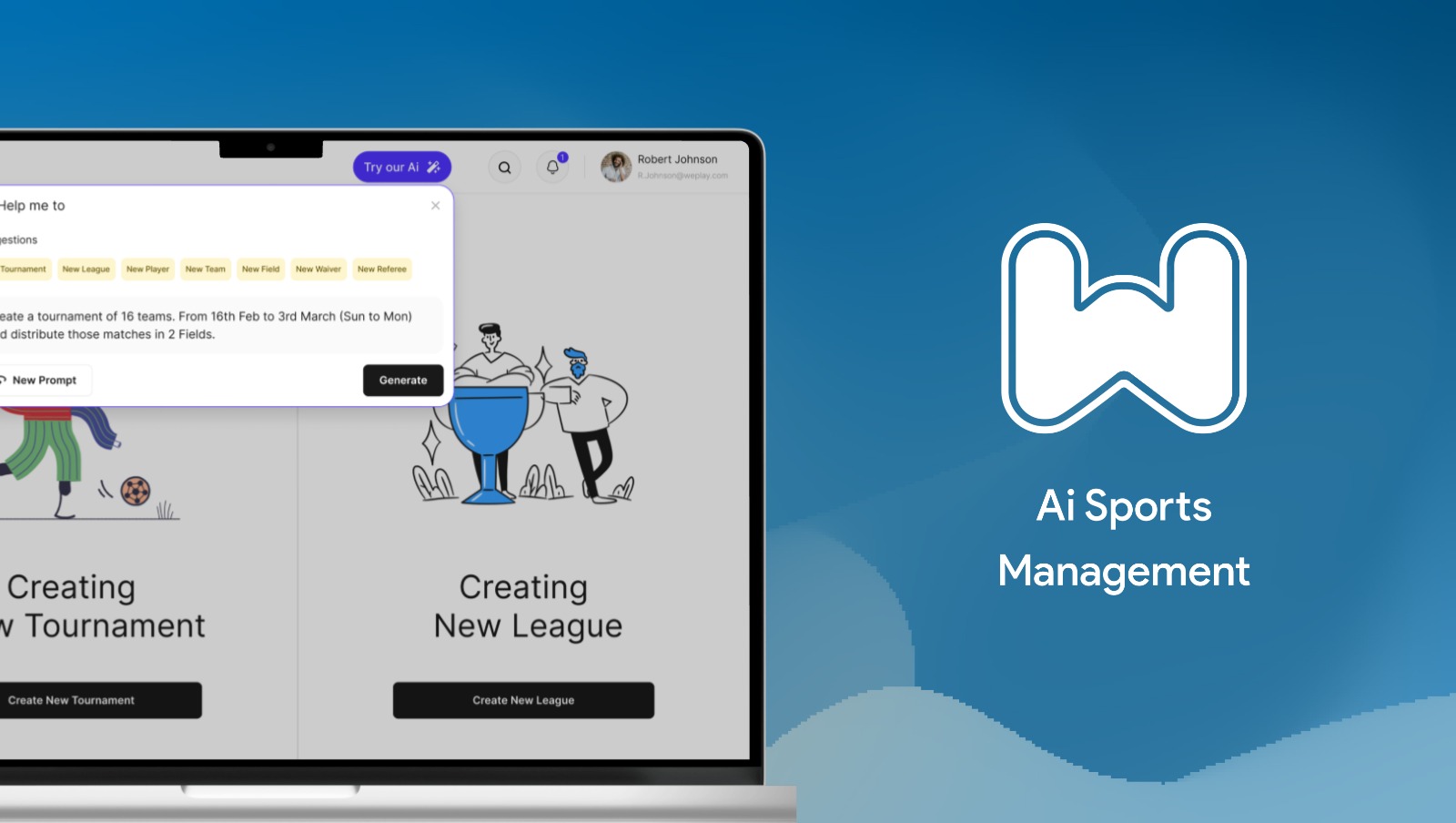
Ai Sports Scheduling
Creating a Streamlined Sports Scheduling Experience
At WePlay Sports, our mission is to deliver a unified sports and facility management experience, all within a single platform. With two years of experience working with WePlay as a Senior UX Designer, this case study focuses on the main selling point of WePlay, which is sports scheduling. Our UX team and I dedicated efforts to simplify, expedite, and streamline the scheduling process, addressing prevalent challenges in the current market.
My Role
Research, Product Thinking, Analysis, Strategy, Responsive Design, Interaction Design, Atomic Design Systems, User-testing, QA
Team
Me (Product Designer)
2 Researcher
2 Stakeholders
3 Engineers
Tools
Figma, FigJam, Google Meet, Pen & Paper, Google Doc, SurveyMonkey, Notion etc
Timeline
1.5 Month
Coffee
Way Too Many ☕️
Outcome 📈
✅ 100% satisfaction in user testing interviews.
✅ Joyful stakeholders – a designer's delight.
✅ Facility owner keen on MVP release testing.
✅ Comprehensive flow documentation in our design system.
✅ Leading the QA process as the flow enters development.
The Problem
How might we enhance the intuitiveness, streamline the experience, and simplify the game scheduling process?
The current sports scheduling process in today's sports management industry encounters various challenges. It lacks a streamlined and efficient system to effortlessly manage, track, and schedule games.
Current Problems
Lack of a streamlined game scheduling process
The necessity to use multiple tools
Complexity and lack of user-friendliness in existing tools
Absence of efficient tracking for fields, player, and team data
Some users resort to using spreadsheets for scheduling
Findability issues pose challenges in keeping track of previously scheduled games
The Goal
Delivering a seamless sports scheduling experience.
Simplifying sports management on a unified platform.
Ensuring an easy-to-use and delightful experience.
Enhancing accessibility to the scheduling process.
Eliminating outdated scheduling methods.
Streamline the tracking of previous, current, and future game
data
Qualitative Research
89% of the people are not satisfied with their current scheduling process
For the research, our goal was to delve into the intricacies of how people currently schedule games in today's world. To achieve this, we established research objectives, identified potential customers, and carefully crafted thoughtful interview questions to guide our research process.
🎯 Research Objectives
Current methods of sports scheduling
The tools currently in use
Sentiments regarding their existing scheduling processes
Crucial information they prioritize during scheduling
Desired enhancements in their current processes
Business Goals
Acquiring customers
Ensuring customer satisfaction
Pricing and plans
Participants
For this scenario, I conducted interviews with four individuals actively engaged in the sports scheduling process for both indoor and outdoor facilities.
💡 User Interviews Questions
Can you paint a picture of a typical day in your professional life as a [Job Title]?
How does the scheduling process unfold in your company?
Based on your experience, is the current process convenient for your daily work?
In your job role as a [Job Title], what tools do you regularly use?
When accessing the scheduling product, do you use a responsive or native software, and how does it impact your experience?
What's the range of your investment with [Product Name], and are there any concerns with that structure?
Walk us through the steps of scheduling something in your current workflow.
What factors would prompt you to consider switching from [Product Name] to another scheduling platform?
If you had a magic wand, what aspect of the current process would you change?
Would you be open to another interview when we have the prototype ready for testing?

We had a blast diving into interviews with our users and spicing things up with some juicy follow-up questions!
☕️ (Picture is blurred because of privacy reasons)
Competitive Analysis
Our competitors fall short in delivering a seamless solution for scheduling games
In the second phase of our research, we wanted to know how indoor and outdoor facilities does sports scheduling with different products. While on this wild ride, we hunted for possible upgrades and cheekily peeked into the current experiences of these products.
We looked into thinks such as:
The strategies employed by our competitors in scheduling.
What functionality they provide for scheduling and management.
Opportunities for improvement and current pain points within those platforms.
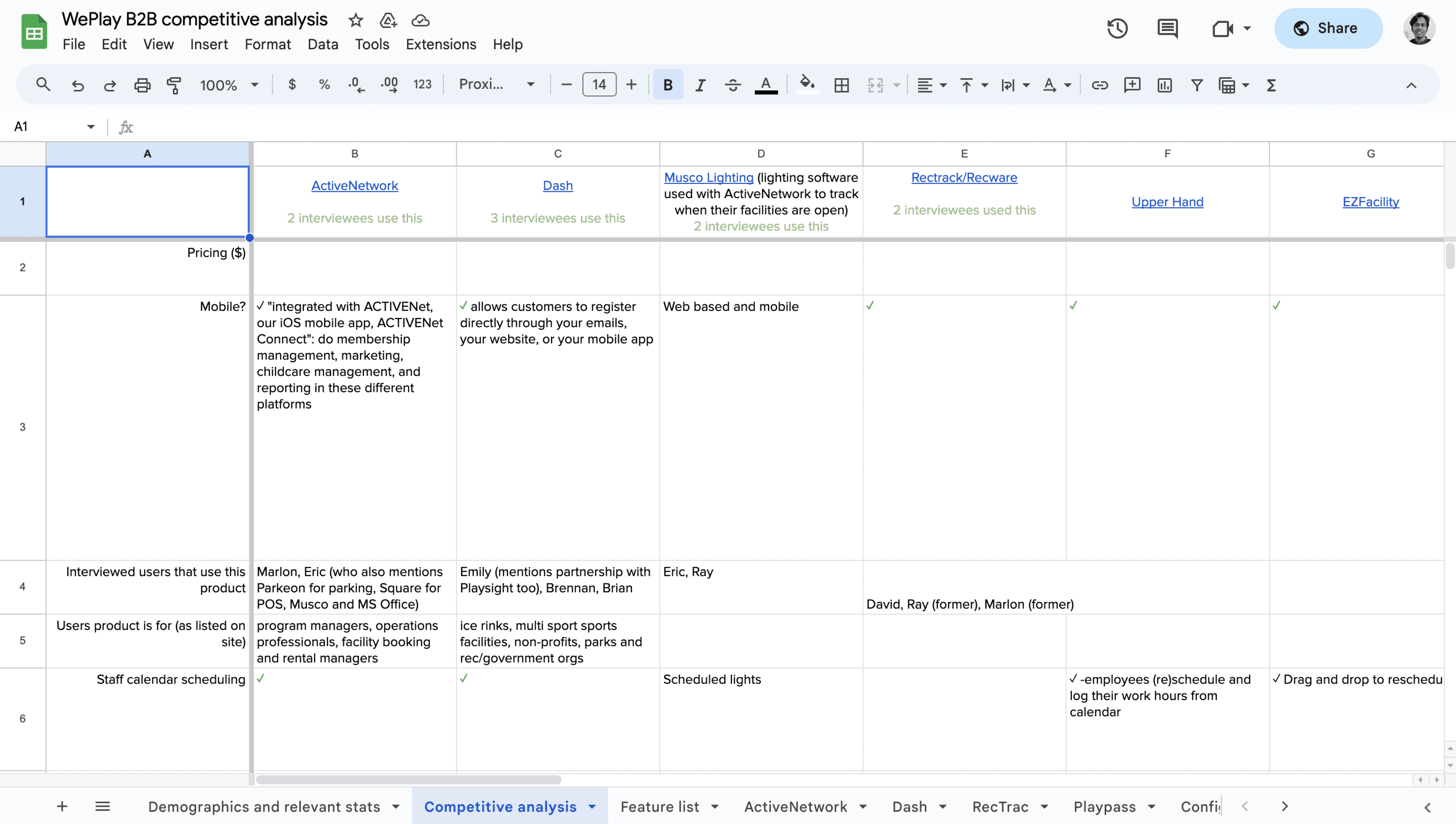
Gaining insights into our competitors' strategies.
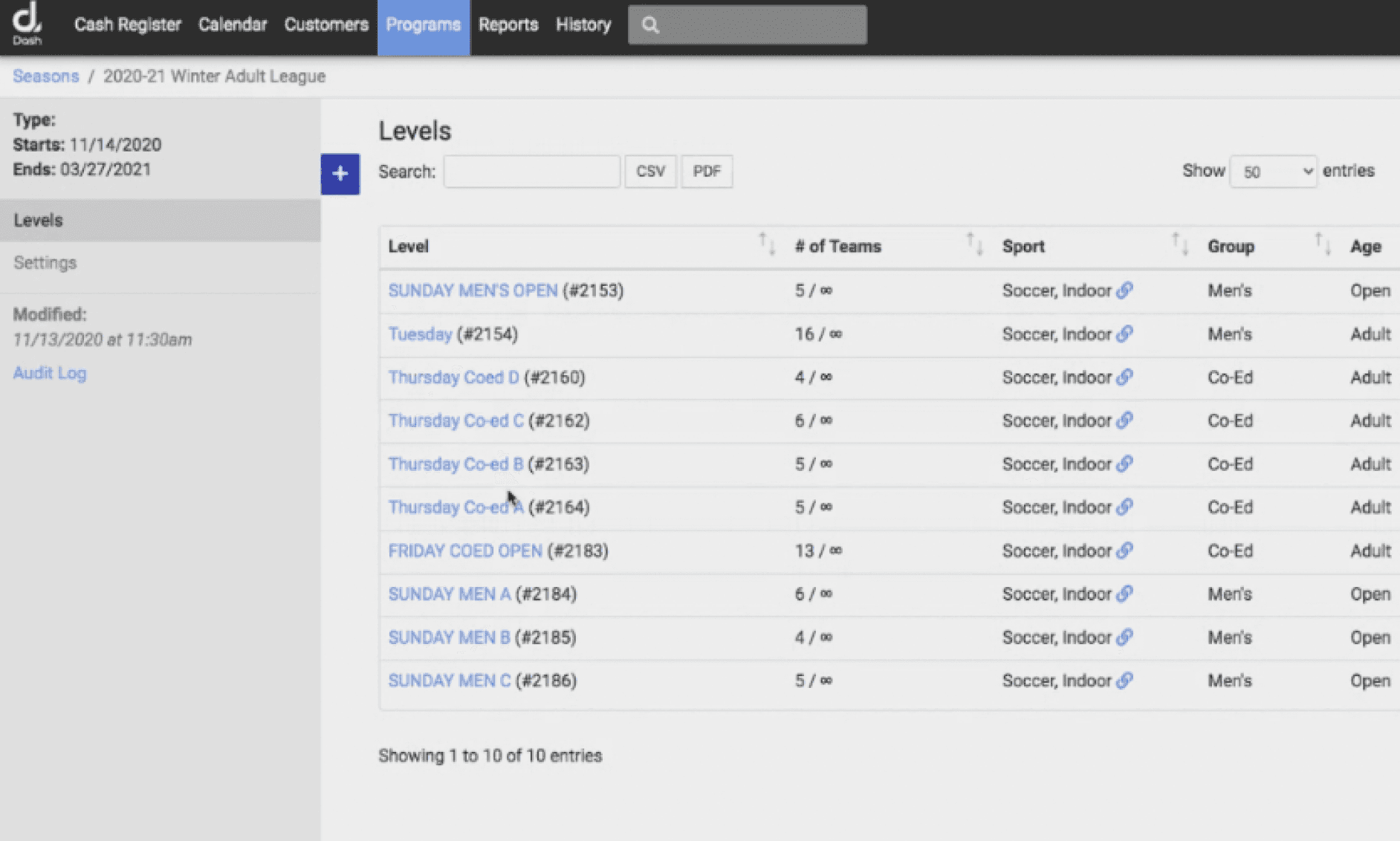

Screenshots from our competitors' products
(Certain information blurred for confidentiality reasons).
FINDINGS
An abundance of tools and a lack of a streamlined process for sports scheduling
After extensive research, it became evident that the current scheduling process falls short in satisfaction, flexibility, and is burdened with constraints. Nearly 100% of users expressed dissatisfaction with their current tools. Drawing insights from user interviews, surveys, and card sorting results, we discovered that:
😣
Too Many Tools!
Individuals utilize various tools for managing player data, team information, setting up fields, scheduling games, etc which is a big pain for the facility owners.
👵🏼
Old Fashioned Process!
Some individuals still resort to pen-and-paper methods, storing player/team data in physical documents, and using outdated tools, practices deemed unacceptable for the company.
🤪
No Streamlined Process!
The current sports scheduling lacks a streamlined process. People follow disparate patterns that consume considerable time and unnecessary expenses.
🤑
Excessive Unnecessary Costs!
Facilities employing diverse methods incur substantial yearly subscription costs. Additionally, the need for extensive manpower to manage multiple software and processes proves both time-consuming and expensive.
🤯
Complex Softwares!
Existing sports scheduling products in the market come with unnecessary complexity, lacking in findability, accessibility, and doesn’t provide important features.
😇
Wants Seamless Process!
Facilities desire a streamlined process that is easy, insightful, and flexible for managing, tracking, and scheduling games within their premises.
Brainstorming Together
Collaborating as a team to discover meaningful solutions using the FigJam board
Our UX designers and stakeholders joined together, casting a spell of creativity on the FigJam board. It's a virtual playground where we bounce around exciting ideas! We also used UX framework named 'Impact Effort' to come up with the must-have features for our grand market entrance! 🧙♀️

FigJam Brainstorming Session! (Details are under wraps for confidentiality)
Sketch
Sketching is the design disco of the product journey – where the fun never stops!
With all the insights we gathered, we decided to jump into the colorful world of sketching – because, not only does it save us time and keep frustration at bay, but it also transforms my design journey into a lively, creative playground! 🎨
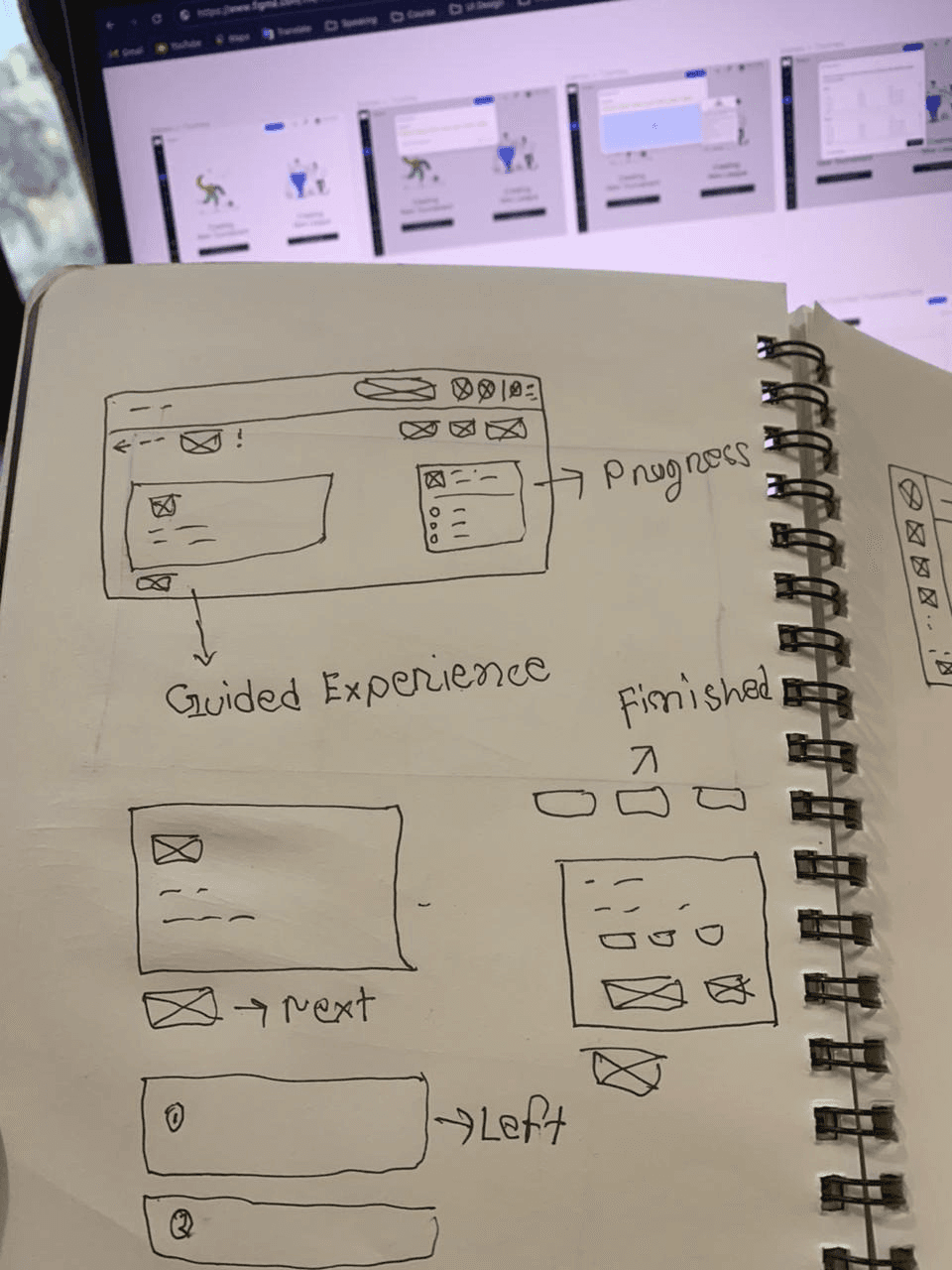
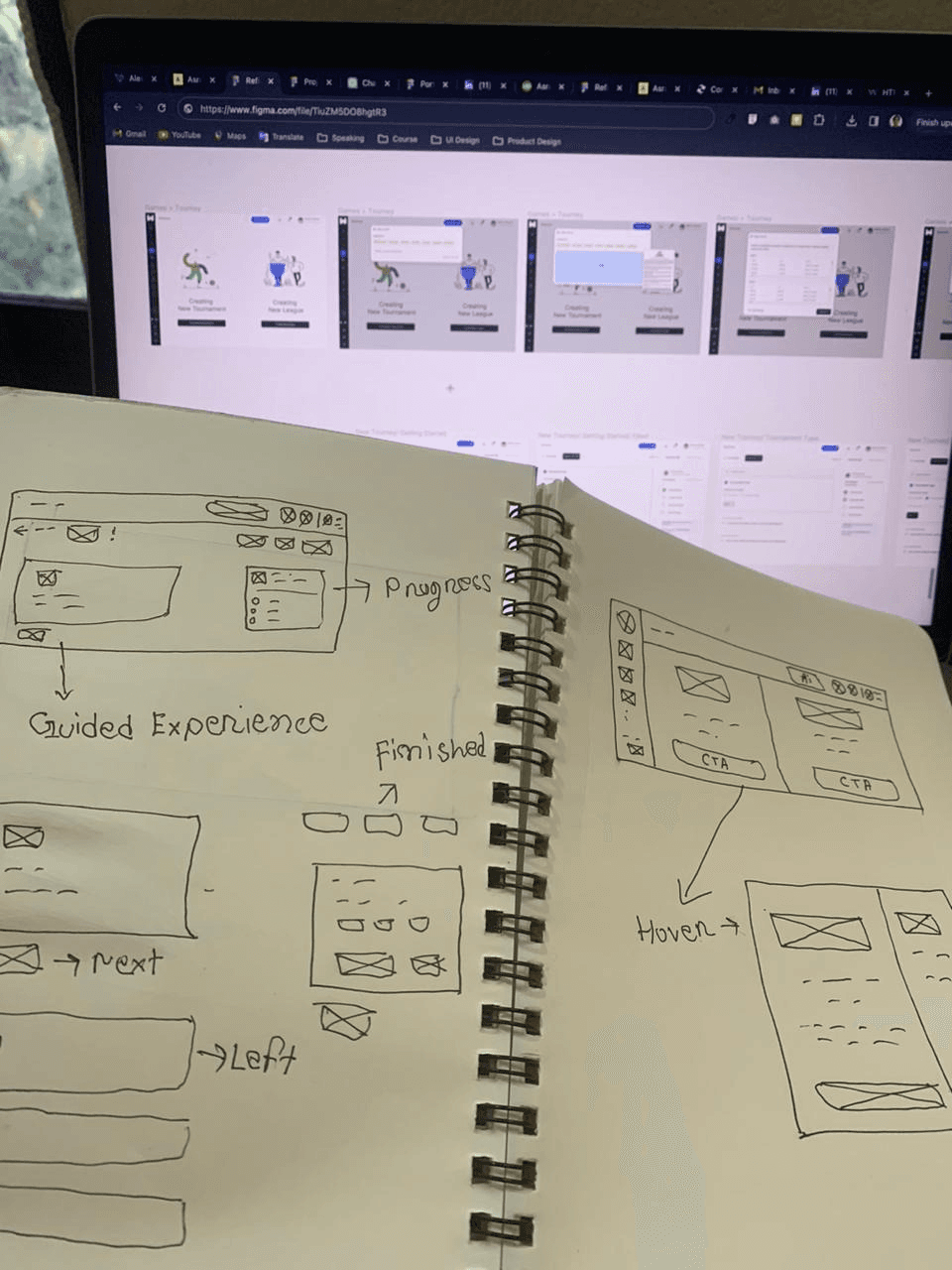
Presenting the work-in-progress masterpiece: Rough Sketches!
(Pardon the cryptic handwriting—it's the secret sauce! 😄)
Design System
Crafting the universal design guidelines for the WePlay’s Ecosystem ☘️
I was responsible for the creation of an Atomic Design System from the ground up, ensuring a uniform experience, scalable patterns, and an expedited development process. Within this system, we categorized elements into atoms (fonts, colors, spacing), molecules (input fields, cards, pagination, snackbars, etc.), organisms (complete forms, profile cards, modals, etc.), and templates, establishing meticulous design guidelines for our product. In future, we will have other products as well which will follow this same design system guidelines creating an ecosystem for the company.




A quick peek into the heart of the WePlay’s design system. (I can proudly say I crafted, manage, and rule it with flair! 😎)
Final Solution
Turning the sports scheduling journey into a breeze! 🌬️⚽
After some magical collaboration with stakeholders and designers, we conjured up design solutions inspired by our agreed-upon paper sketches. Our mission? To transform the sports scheduling ordeal into a whimsical, intuitive, and seamlessly streamlined adventure! But wait, there's more fun in our product – we've got Waivers, Players, Fields, and Teams Flows joining the party, creating an all-in-one platform that's practically the superhero of sports scheduling. 🚀⚽✨


Schedule Games using Ai 🧙♀️
This innovation ensures substantial time savings during scheduling. Unlike traditional software, which may take over 30+ minutes, our solution cuts it down to less than a minute, enabling users to effortlessly customize schedules. We deliver flexibility, freedom, and a seamlessly streamlined scheduling process.
The integration of AI into our sports and facility management software brings forth limitless possibilities. Facility admins, in particular, can assign tasks to maintenance, add players using paper photos, and do a lot of things using the integrated Ai feature.
Create schedule using Files 📝
Many facilities still rely on paper, excel sheet etc for scheduling games. We've simplified the process by introducing a feature that scans text from papers/ files and utilizes the power of AI to create schedules for them.
This upload feature proves particularly beneficial for our Waiver flow, allowing facility admins to create digital waiver forms using physical papers.




Simple, functional, and Guided Experience 🚀
When compared to other competitor products where users juggle multiple tools, our platform stands out. We've unified players, teams, waivers, fields, referees, and communication flows which are seamlessly connected with the games flow. This consolidated approach empowers users with complete control in a single, user-friendly space during the scheduling process.
Providing Flexibility For The Users 🤠
From the user research we understood that many facilities need the flexibility of being able to manage everything using their tablet/mobile devices. And 90% of our competitors fail in this scenario. That’s why we, as designers, added breakpoints for different screens and created mobile apps for both Android/IOS to do everything with any platform.
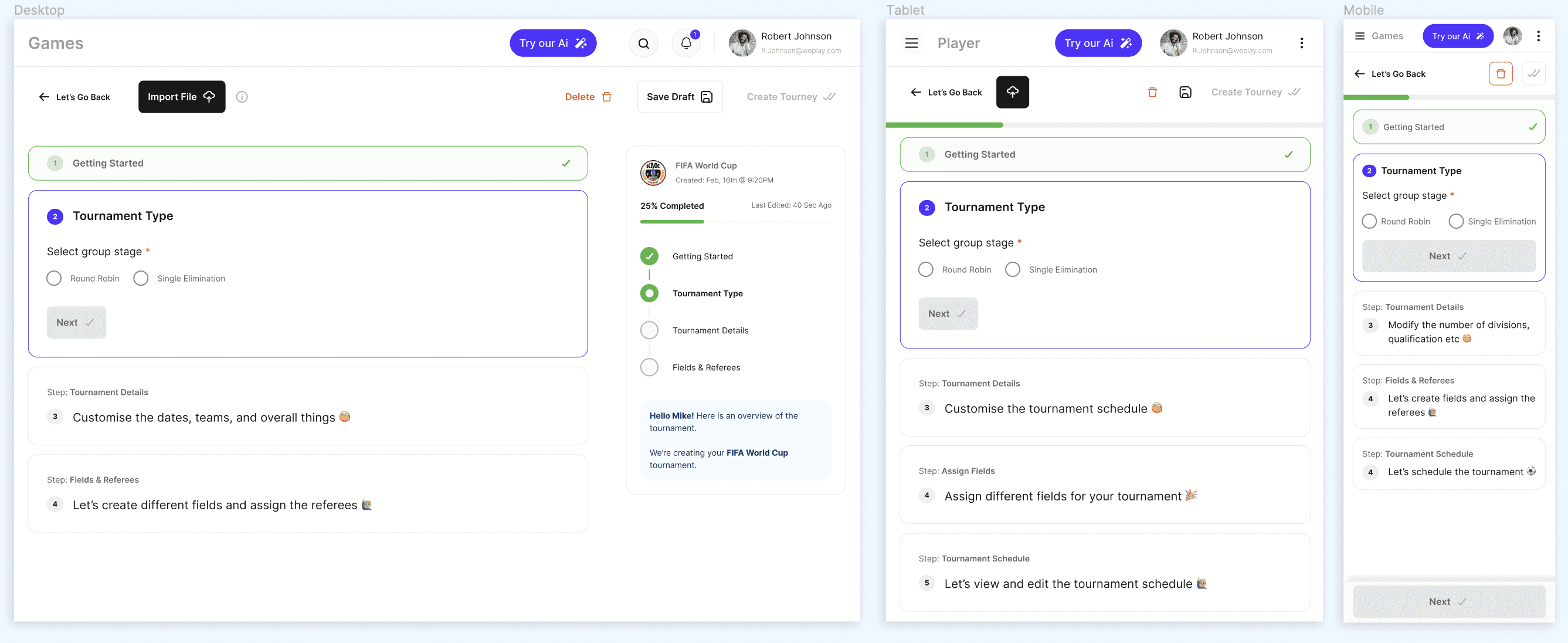

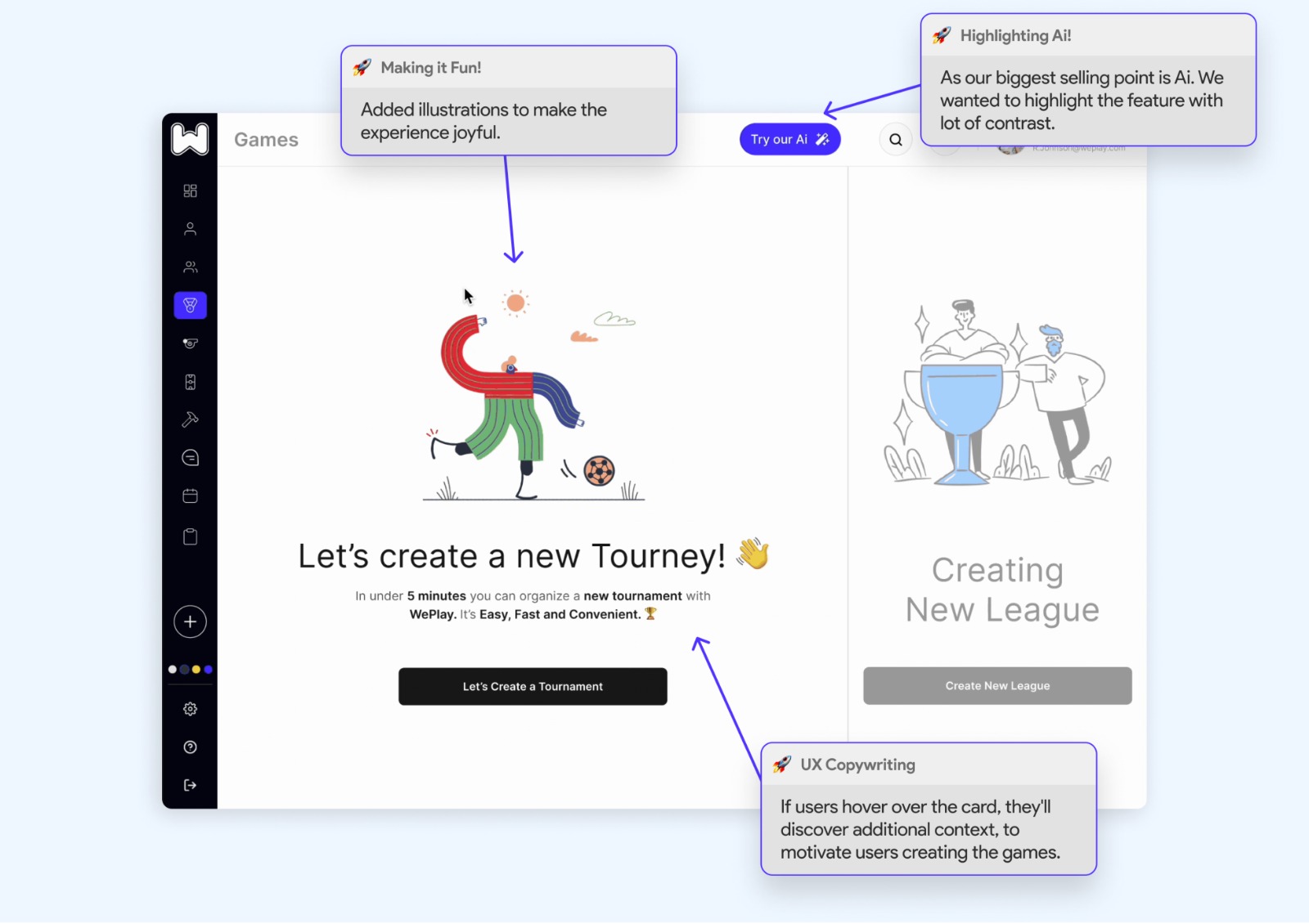


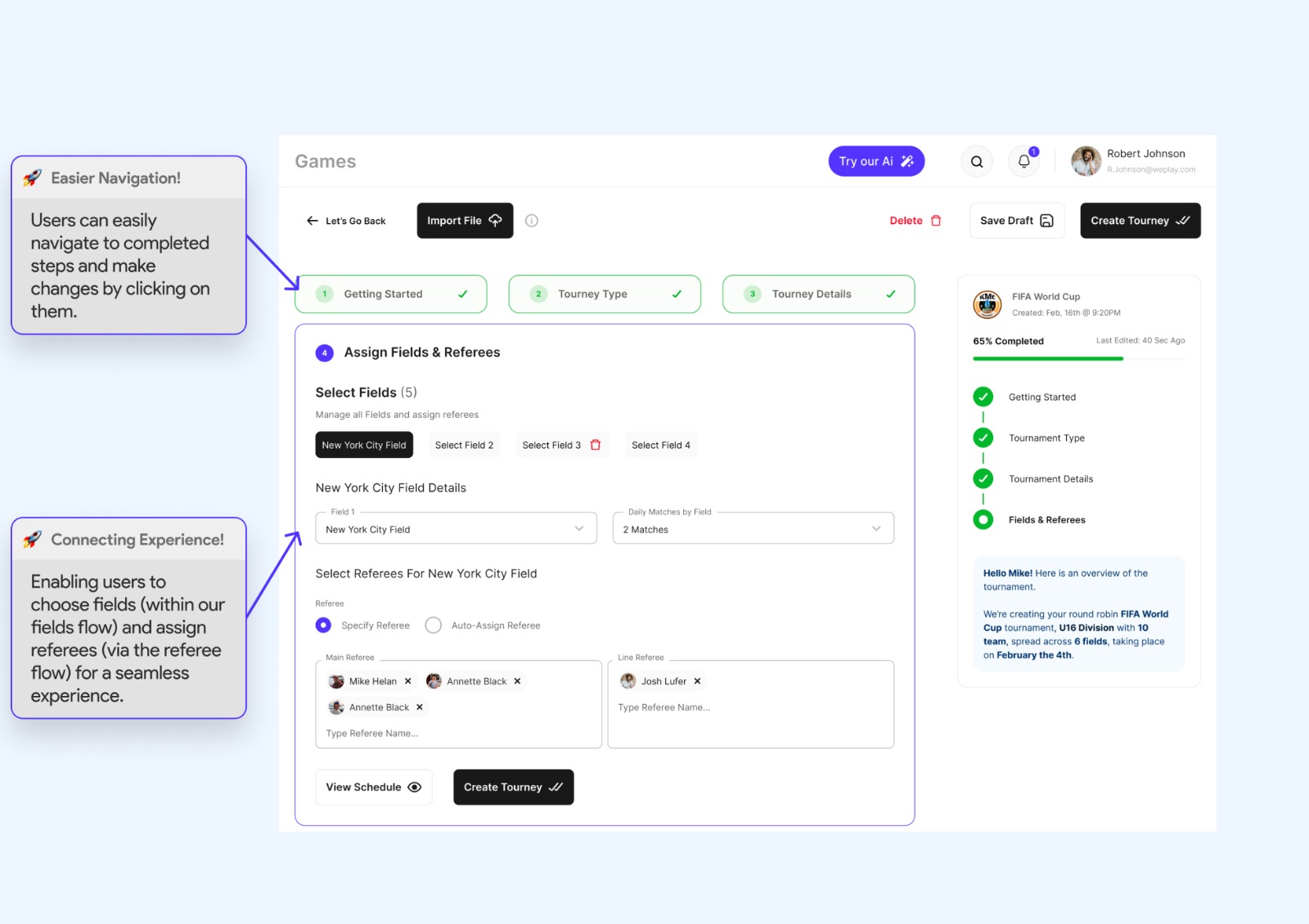


Sneak peek at the snazzy prototype of our ultimate design solution! 🚀
Outcome
“WePlay will rule the sports & facility management industry with the flexibility we offer in scheduling.”
Said Alhayek (Co-Founder)
Our stakeholders were pleasantly surprised by the innovative vision we presented to address the existing sports scheduling challenges through our new design. We've even developed an MVP version for an early release that will be launched soon.
The current suceess of this project includes:
✅ 100% satisfaction from facility owners in user testing interviews.
✅ Joyful faces of our stakeholders, a designer's favorite sight.
✅ A facility owner who participated in our user testing expressed interest in being part of the MVP release testing.
✅ Comprehensive documentation of the flow in our design system.
✅ The flow is in the development process, and I'm taking the lead as the QA Designer.
Unfortunately, due to the situation in Palestine (where our dev team is based), we couldn’t launch the MVP yet. As I write this case study, my thoughts and prayers are with them for a safe and swift recovery 🤲🏻.
Learnings & Next Steps
Effective management skills are crucial to success as a Product Designer
Recognizing the significance of user research:
We began this project with limited insights. Through numerous user research sessions, we unearthed a plethora of challenges and identified market gaps within the sports and facility management industry. As a cohesive team, we leveraged these insights to craft innovative solutions that directly address the needs of the facilities.
Proper Management & Collaboration:
I've come to appreciate the significance of paying attention to small details, understanding their potential to bring about significant changes in the design process. Under the guidance of my Design Lead, I've learned efficient task management using ClickUp, assigning tasks to engineers, jotting down comprehensive QA notes, making annotations, and effectively communicating design behavior to developers. These skills have not only enhanced my design capabilities but also equipped me with valuable management and collaborative skills.
Always Take Notes:
The significance of note-taking cannot be overstated. Acknowledgingthe natural tendency of the human brain to forget, I've fully grasped the importance of meticulous note-taking throughout this project. Whether using Figma's comments feature for in-design notes, annotating designs during stakeholder discussions (resulting in a remarkable 200% improvement in design review sessions), documenting details and notes in ClickUp, or employing sticky notes (a technique I've also adopted at home for tracking project details and more), note-taking has proven to be a cornerstone of effective project management for myself.
For the next Steps:
I'll maintain a vigilant QA process while the dev team works on the flow
Delving into V2 ideas and improvements is next on the horizon.
Improve on the visual designs of the product.
As we roll out the product, I'll be actively engaged in conducting additional user testing.